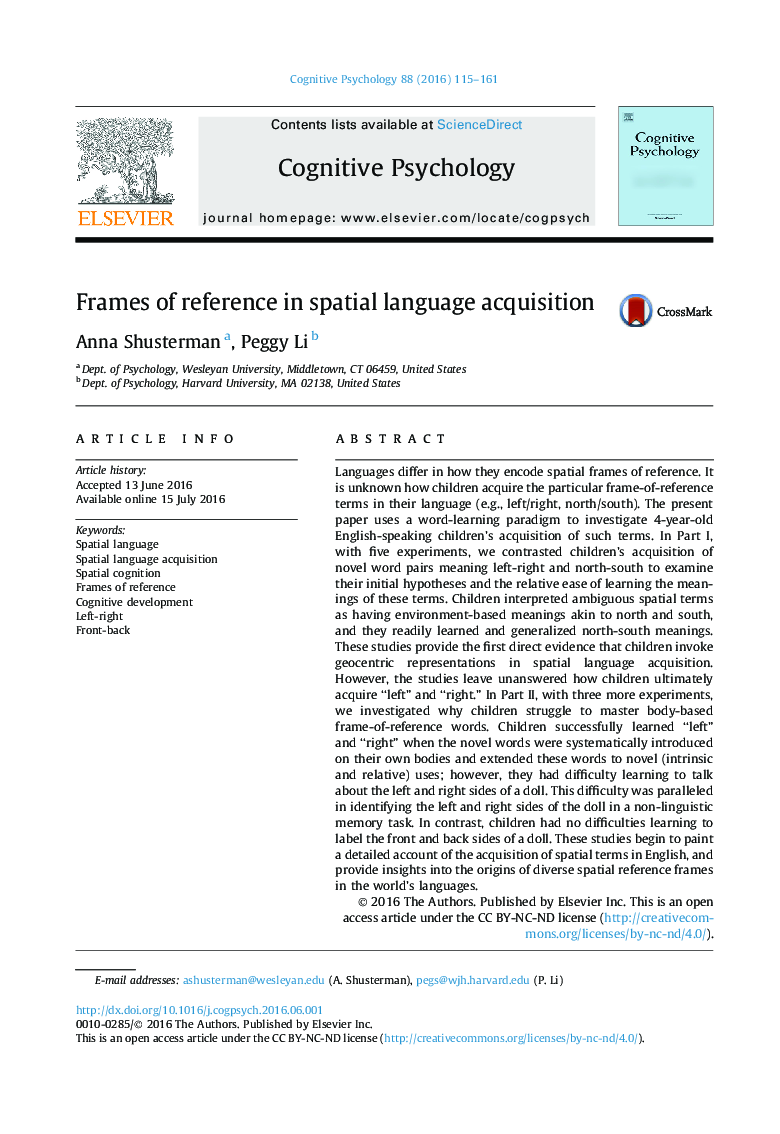| Article ID | Journal | Published Year | Pages | File Type |
|---|---|---|---|---|
| 7272733 | Cognitive Psychology | 2016 | 47 Pages |
Abstract
Languages differ in how they encode spatial frames of reference. It is unknown how children acquire the particular frame-of-reference terms in their language (e.g., left/right, north/south). The present paper uses a word-learning paradigm to investigate 4-year-old English-speaking children's acquisition of such terms. In Part I, with five experiments, we contrasted children's acquisition of novel word pairs meaning left-right and north-south to examine their initial hypotheses and the relative ease of learning the meanings of these terms. Children interpreted ambiguous spatial terms as having environment-based meanings akin to north and south, and they readily learned and generalized north-south meanings. These studies provide the first direct evidence that children invoke geocentric representations in spatial language acquisition. However, the studies leave unanswered how children ultimately acquire “left” and “right.” In Part II, with three more experiments, we investigated why children struggle to master body-based frame-of-reference words. Children successfully learned “left” and “right” when the novel words were systematically introduced on their own bodies and extended these words to novel (intrinsic and relative) uses; however, they had difficulty learning to talk about the left and right sides of a doll. This difficulty was paralleled in identifying the left and right sides of the doll in a non-linguistic memory task. In contrast, children had no difficulties learning to label the front and back sides of a doll. These studies begin to paint a detailed account of the acquisition of spatial terms in English, and provide insights into the origins of diverse spatial reference frames in the world's languages.
Related Topics
Life Sciences
Neuroscience
Cognitive Neuroscience
Authors
Anna Shusterman, Peggy Li,
